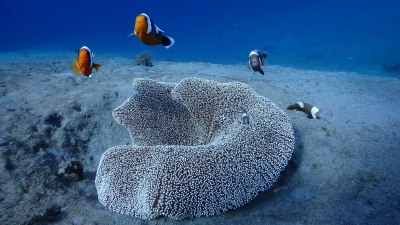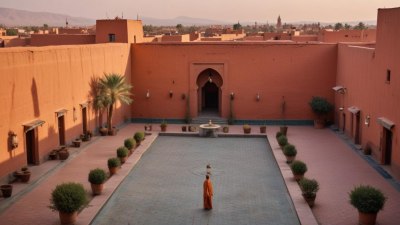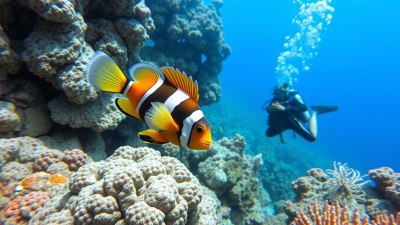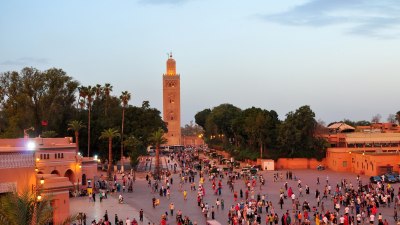Stories Etched in Coral in Lamu, Kenya
Explore the rich history and vibrant tales of coral reefs in Lamu, Kenya.

Lamu, a coastal town in Kenya, is renowned for its stunning beaches, rich cultural heritage, and the deep-rooted connection of its people with the coral reefs. These coral structures are not just natural wonders but also storied landscapes that encapsulate centuries of history, tradition, and biodiversity. Nestled in the Indian Ocean, the coral reefs of Lamu serve as a mirror reflecting the vibrant tapestry of life both underwater and within the local community.
The Importance of Coral Reefs
Coral reefs are often called the 'rainforests of the sea' due to their vast biodiversity and the variety of life forms they support. In Lamu, these reefs play a crucial role in the ecological balance and provide habitat for fish and countless other marine organisms. The health of these reefs directly influences the local fishing industry, which is vital for the livelihoods of many Lamu residents.
The coral reefs also protect the coastline from erosion, acting as natural barriers against storm surges and high waves. This protection is increasingly important in the face of climate change and rising sea levels. Consequently, the preservation of coral reefs is not only an ecological necessity but also a social imperative for the Lamu community, who rely on these resources for their way of life.
Historical Context
The coral reefs of Lamu have a deeply rooted history intertwined with the Swahili culture that has flourished in the region for centuries. Lamu Island is one of the oldest towns in Kenya, with a history that dates back to the 14th century. Its strategic position along trade routes connecting the Middle East, India, and the coastal cities of Africa attracted merchants and settlers, leading to a rich blend of cultures.
During this time, the local people developed sustainable fishing practices and respected the reefs' natural cycles. Traditional fishing methods and customs, passed down through generations, emphasize the necessity of stewardship of coral ecosystems. These cultural narratives and practices are woven into folklore and oral history, where coral reefs are seen as guardians of the ocean's stories.
Marine Life and Biodiversity
The coral reefs surrounding Lamu are home to an astonishing array of marine life, including various species of fish, crustaceans, mollusks, and sea turtles. This rich biodiversity forms the backbone of Lamu’s fishing economy. Fishermen often tell stories of the abundant catch that these reefs provide, linking fishing not only to food security but also to cultural identity.
Some of the notable marine species found in Lamu’s waters include the vibrant parrotfish, the gentle hawksbill turtles, and the elusive dugongs, each playing a part in maintaining the health of the reef ecosystem. The relationship between the local community and these creatures is vital, as traditional beliefs often view them as symbols of good fortune and protectors of marine health.
Ecotourism and Community Involvement
In recent years, ecotourism has emerged as a sustainable development avenue for Lamu. By promoting snorkeling and diving experiences, visitors have the opportunity to appreciate the breathtaking beauty of the coral reefs. This influx of tourists provides a vital source of income for many local families, fostering a deeper appreciation for the marine environment.
Community-led initiatives have also arisen, focusing on environmental conservation and education about the importance of coral reefs. Local organizations often collaborate with global conservation efforts to monitor coral health, conduct clean-up campaigns, and educate both residents and tourists about sustainable fishing practices and reef preservation.
Challenges Facing Coral Reefs
Overfishing, particularly the use of destructive fishing techniques, not only depletes fish stocks but also damages the coral structures themselves. This combination of stressors has led to a decline in coral health, which in turn affects the biodiversity that relies on these ecosystems.
Conservation Efforts
Recognizing the importance of coral reefs, various conservation initiatives have been launched in Lamu. These efforts focus on restoring damaged reefs, monitoring coral health, and implementing sustainable fishing practices. Engaging local communities in conservation efforts is crucial, as their knowledge and connection to the reefs play a key role in effective stewardship.
Participatory approaches, where local stakeholders are involved in decision-making related to marine resources, have shown promise in fostering a sense of ownership and responsibility. By creating marine protected areas (MPAs) and establishing regulations on fishing practices, the community can work together to safeguard their coral reefs for future generations.
The Role of Education
Education is a powerful tool in coral conservation. Schools in Lamu have begun incorporating marine science into their curricula, teaching children about the importance of coral reefs and marine ecosystems from a young age. Educational programs often include hands-on activities, such as beach clean-ups and reef surveys, which inspire stewardship and respect for the ocean.
Furthermore, engaging with tourists through educational experiences can bridge the gap between conservation and enjoyment of Lamu’s natural beauty. By fostering an understanding of the challenges faced by coral reefs, visitors can contribute positively, such as advocating for sustainable tourism practices and supporting local conservation efforts.
Future Perspectives
As we look to the future, the stories etched in coral in Lamu, Kenya, remind us of the interconnectedness of life and the environment. The timeless tales of resilience, guardianship, and community spirit continue to thrive amidst challenges. By prioritizing conservation and sustainable practices, the vibrant coral reefs of Lamu can flourish, ensuring that future generations inherit a rich cultural and natural legacy.
In conclusion, the coral reefs of Lamu are more than just underwater landscapes; they are integral to the historical and cultural identity of the local community. By embracing sustainable practices and engaging in conservation efforts, the stories etched in coral can continue to be told for generations to come.











